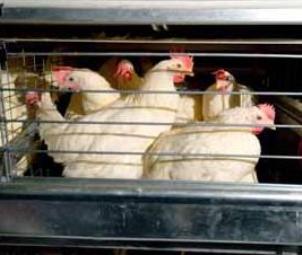Cage ban bill introduced to US House of Representatives

Three members of the US House of Representatives have introduced a bill that, if made law, would improve the welfare of the 280 or million egg-laying hens by 2030.
- require conventional cages to be replaced during an ample phase-in period with new, enriched colony housing systems that provide all egg-laying hens nearly double the amount of current space;
- require that, after a phase-in period, all egg-laying hens be provided with environmental enrichments, such as perches, nesting boxes and scratching areas, that will allow hens to express natural behaviors;
- require labeling on all egg cartons nationwide to inform consumers of the method used to produce the eggs—“eggs from caged hens,” “eggs from hens in enriched cages,” “eggs from cage-free hens” and “eggs from free-range hens”;
- prohibit feed- or water-withdrawal molting to extend the laying cycle, a practice already prohibited by the United Egg Producers Certified program;
- require standards approved by the American Veterinary Medical Association for euthanasia of egg-laying hens;
- prohibit excessive ammonia levels in henhouses; and
- prohibit the transport and sale of eggs and egg products nationwide that don’t meet these requirements.
“Eggs are a national commodity and egg producers should have a level playing field – not have different, costly rules in all 50 states,” said Gene Gregory, president and chief executive of the UEP, which represents 88% of the nation’s egg producers.
If enacted, the proposal would require egg producers to increase space per hen in a tiered phase-in, with the amount of space hens are given increasing, in intervals, over the next 15 to 18 years. Currently, the majority of hens are each provided 432 square centimetres of space, with up to 50 million receiving just 309 square centimetres. The proposed phase-in would culminate with a minimum of 800 square centimetres of space for white hens and 929 for brown hens nationwide.













